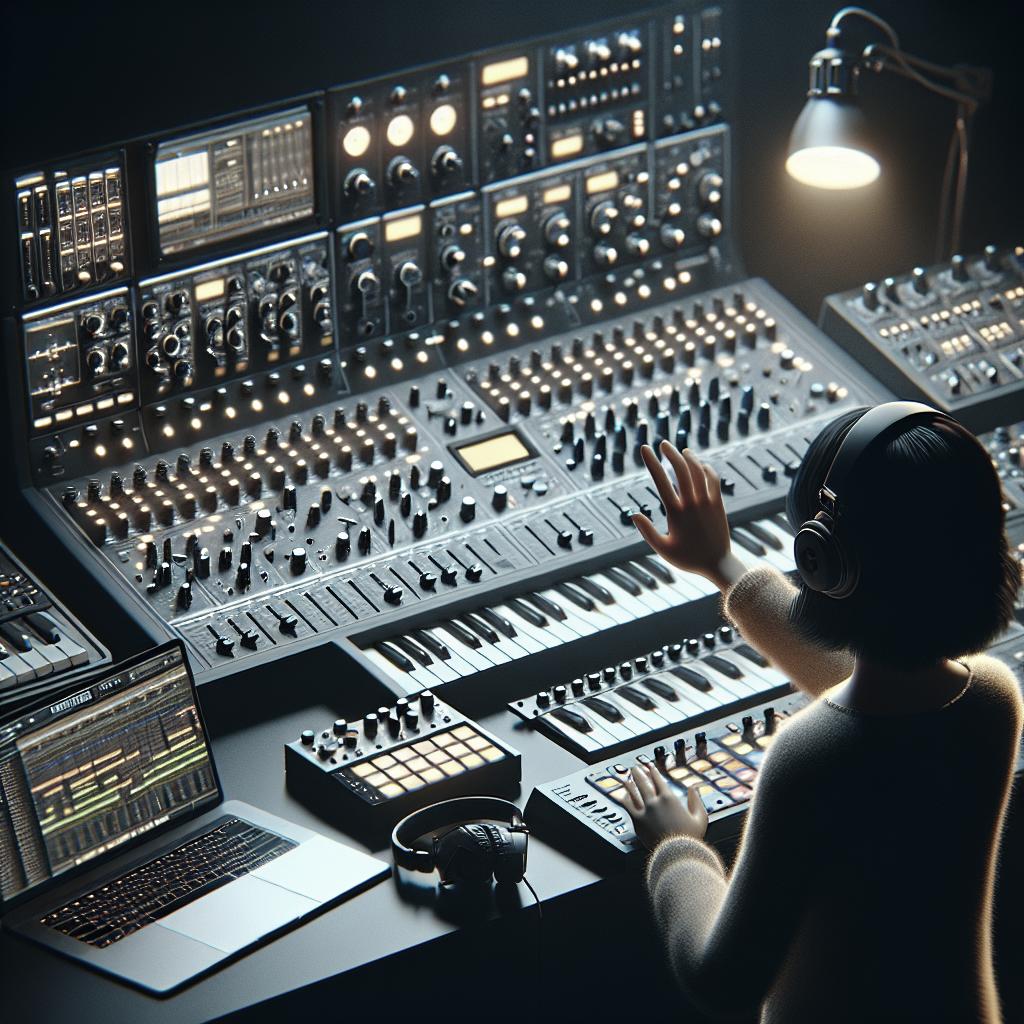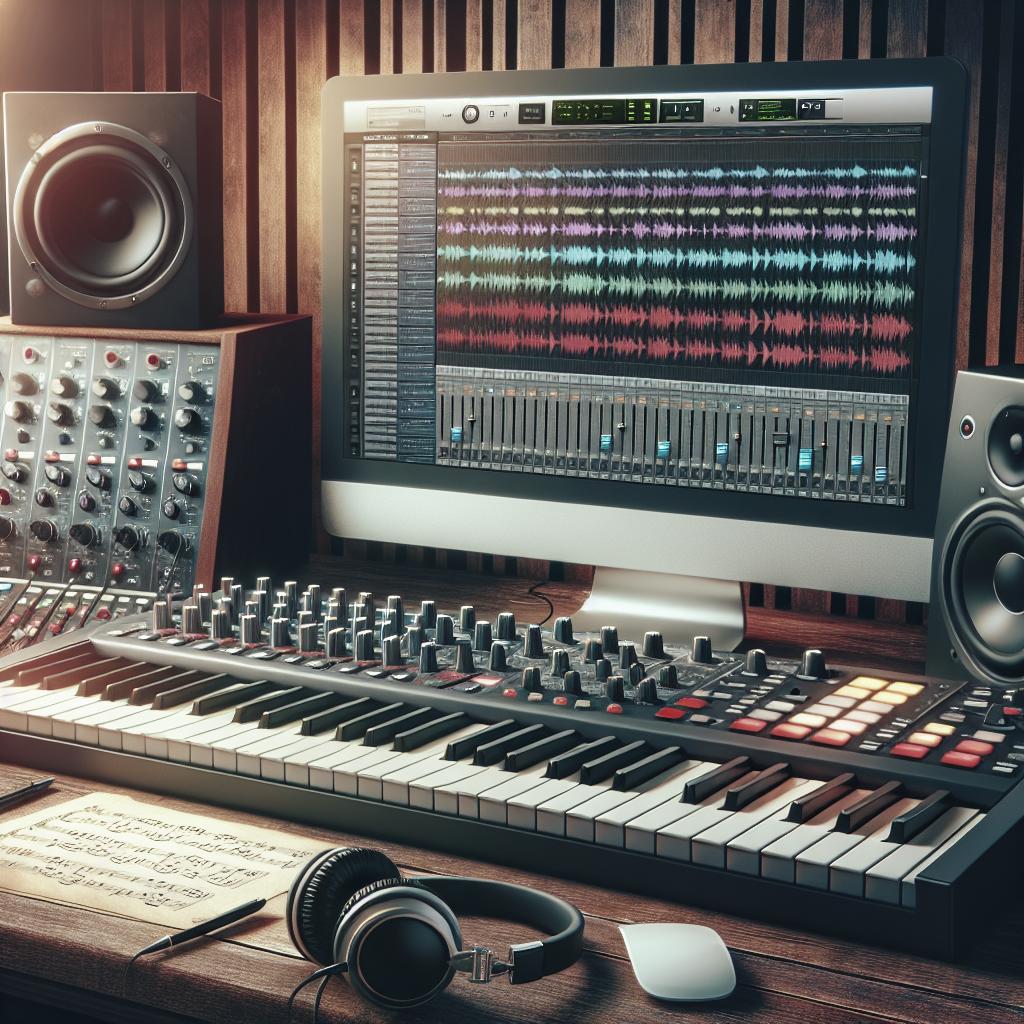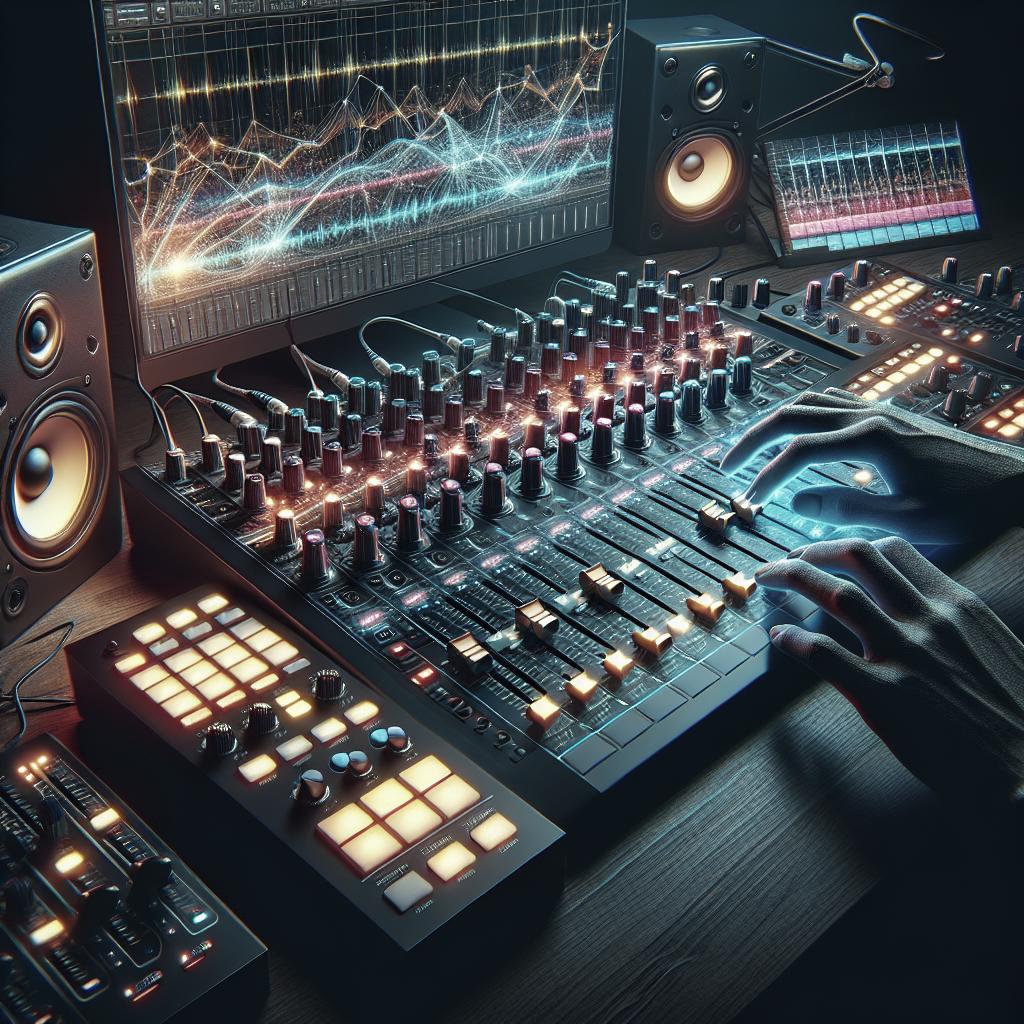<>
Producing electronic music is an exciting and rewarding journey that allows you to express your creativity through sound. This blog post will guide you through the essentials of producing electronic music, from setting your musical goals to mastering your tracks. We will explore the necessary equipment, dive into the basics of music theory, and unlock the mysteries of sound design. Whether you’re new to music production or looking to refine your skills, this step-by-step guide will help you navigate the intricacies of electronic music production, providing you with the knowledge and tools needed to create captivating compositions. Let’s embark on this musical adventure together and transform your sonic ideas into reality.
1. Define Your Musical Goals
Before diving into the technical aspects of music production, it’s essential to define your musical goals. Are you aiming to produce tracks for personal enjoyment, or do you aspire to release music professionally? Identifying your goals will shape your approach to learning and help you stay motivated. Consider the genre of electronic music you’re passionate about. Electronic music encompasses a wide range of styles, from house and techno to dubstep and ambient. Familiarize yourself with different genres and pinpoint which resonates with you the most. This will provide a clearer direction for your productions and help you develop a unique sound. Set specific, achievable goals for your music production journey. For example, aim to complete a certain number of tracks within a specific timeframe, or to learn a particular production technique. By establishing clear goals, you can track your progress and maintain focus throughout the learning process.
2. Obtain the Necessary Equipment
Equipping yourself with the right tools is crucial for producing electronic music. At the heart of your setup will be a Digital Audio Workstation (DAW). Popular DAWs include Ableton Live, FL Studio, and Logic Pro. Each DAW has its strengths and workflow preferences, so experiment with a few to find the one that suits you best. In addition to a DAW, invest in a quality pair of studio monitors or headphones. Accurate monitoring is essential for making informed decisions about your mix. While studio monitors are ideal, a good pair of studio headphones can be a practical alternative, especially if you’re working in a space with noise limitations. Other essential equipment includes a MIDI controller and an audio interface. A MIDI controller, such as a keyboard or pad controller, allows you to input notes and control various parameters within your DAW. An audio interface enhances the quality of your recordings and ensures low-latency performance. Start with these basics and gradually expand your setup as you grow more experienced.
3. Learn the Basics of Music Theory
Understanding music theory can greatly enhance your ability to create compelling and coherent tracks. Start with the fundamentals, such as scales, chords, and rhythm. Knowing how to construct chords and progressions will enable you to build harmonious and dynamic compositions. Scales form the foundation of melody and harmony. Familiarize yourself with major and minor scales, and explore other scale varieties like pentatonic and modal scales. This knowledge will help you craft melodies that are both interesting and musically coherent. Rhythm is equally important in electronic music. Study common time signatures and rhythmic patterns used in various genres. Experiment with creating your drum patterns, and practice layering different rhythmic elements to add complexity and groove to your tracks. Even a basic understanding of rhythm can lead to more engaging compositions.
4. Explore Sound Design
Sound design is a key aspect of electronic music production that allows you to sculpt and manipulate sound in innovative ways. Start by learning how to use synthesizers, which are the backbone of many electronic sounds. Familiarize yourself with subtractive, additive, and FM synthesis to create a variety of textures and tones. Sampling is another powerful tool in your sound design arsenal. By using samples, you can add unique and organic elements to your tracks. Experiment with chopping, stretching, and layering samples to create custom sounds. There are many online libraries where you can find high-quality samples, or record your own to add an extra layer of originality. Don’t forget about effects processing, which can transform your sounds in dramatic ways. Reverb, delay, distortion, and modulation effects are commonly used in electronic music to enhance and reshape audio. Practice applying these effects judiciously to add depth and character to your sounds.
5. Start Composing and Arranging
With a solid understanding of music theory and sound design, it’s time to start composing your tracks. Begin by laying down a basic structure, focusing on key elements such as the intro, verse, chorus, and outro. Use your DAW’s arrangement tools to organize these sections and visualize the flow of your track. Experiment with different layering techniques to build and maintain energy throughout your composition. Layering involves combining multiple elements, such as synths, drums, and basslines, to create a fuller and more dynamic sound. Pay attention to how different layers interact and complement each other. Arrangement is not just about placing parts in order; it’s also about creating movement and evolution within your track. Use automation to introduce changes in volume, panning, and effects over time. This will keep the listener engaged and add a sense of development to your composition.
6. Learn About Mixing and Mastering
Mixing and mastering are crucial steps in finalizing your track and ensuring it sounds polished and professional. During mixing, balance the levels of individual elements, apply EQ to clean up frequencies, and use compression to control dynamics. A well-balanced mix allows each element to be heard clearly without clashing. Panning is another important mixing technique that helps create a sense of space in your track. Distribute instruments across the stereo field to avoid overcrowding in certain frequency ranges. Additionally, use reverb and delay judiciously to add depth and dimension to your mix without making it sound muddy. Mastering is the final step, where you prepare your mix for distribution. This involves applying overall EQ, compression, and limiting to ensure your track has the appropriate loudness and cohesiveness. While mastering can be complex, there are many online resources and software tools available to help you achieve a professional sound.
7. Seek Inspiration and Learn from Others
One of the best ways to improve your music production skills is by learning from others. Study tracks from your favorite artists and analyze their production techniques. Pay attention to how they structure their songs, design sounds, and mix elements. This can provide valuable insights and inspire new ideas for your own work. Join online communities and forums dedicated to electronic music production. Platforms like Reddit, Gearslutz, and various Facebook groups are great places to share your work, receive feedback, and connect with other producers. Engaging with a community can provide support, motivation, and opportunities for collaboration. Continuously expand your knowledge by following tutorials, reading articles, and taking online courses. Websites such as YouTube, Coursera, and Udemy offer a wealth of educational content on various aspects of music production. Staying informed about new techniques and trends will help you evolve as a producer and keep your music fresh.
To Sum Up
Producing electronic music is a multifaceted process that combines technical skills with creative expression. By defining your goals, acquiring the right equipment, and studying music theory, you lay a strong foundation for your production journey. Exploring sound design, composing, and arranging music allows you to craft unique and engaging tracks. Mastering the art of mixing and mastering ensures your work sounds professional. Finally, seeking inspiration and learning from others will keep you motivated and constantly improving.
| Step | Key Actions |
|---|---|
| Define Your Musical Goals | Identify your purpose, choose a genre, and set specific objectives. |
| Obtain the Necessary Equipment | Select a DAW, invest in monitors/headphones, MIDI controller, and audio interface. |
| Learn the Basics of Music Theory | Understand scales, chords, and rhythm to create harmonious tracks. |
| Explore Sound Design | Practice using synthesizers, sampling, and effects processing. |
| Start Composing and Arranging | Lay down a basic structure, experiment with layering, and use automation. |
| Learn About Mixing and Mastering | Balance elements, use EQ and compression, and prepare your mix for distribution. |
| Seek Inspiration and Learn from Others | Study other artists, join online communities, and follow tutorials. |


